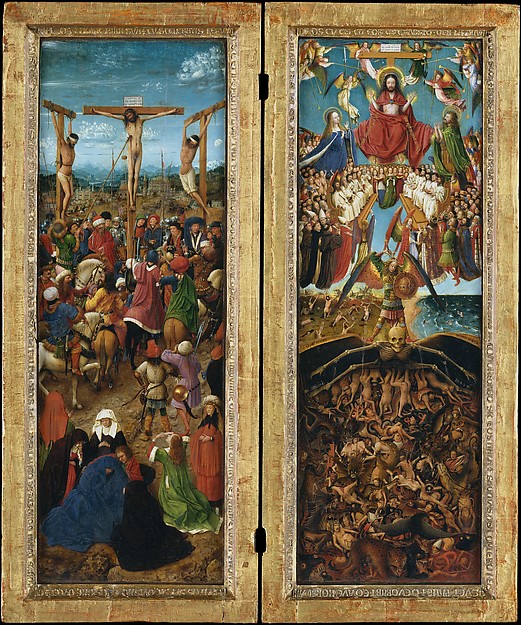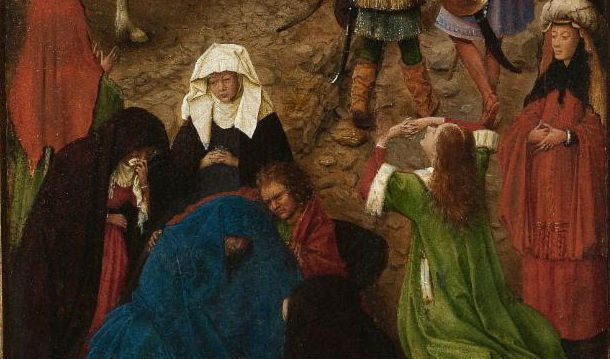
NEW YORK – “A New Look at a Van Eyck Masterpiece,” a focus exhibition that presents findings of a recent study of Jan van Eyck’s Crucifixion and Last Judgment paintings (ca. 1440–41), will close at the Metropolitan Museum of Art on April 24.
These paintings and their frames have undergone technical investigations in an effort to solve long-standing mysteries about them. Whether the paintings were always intended as a diptych, or whether they were originally the wings of a triptych whose centerpiece has long disappeared, has been in question. The answer may be found not only in a closer look at the frames, but also in the relationship of the Metropolitan’s Crucifixion painting to a recently rediscovered drawing of the Crucifixion attributed to Jan van Eyck (ca. 1390-1441) that has been acquired by the Boijmans Van Beuningen Museum in Rotterdam, and is also be on view in the Met’s exhibition.
Exactly what this relationship is, however, is a matter of discussion that impacts many other issues, such as the attribution, date, and function of the drawing, as well as the date and original form and function of the paintings.
New infrared reflectography now affords an opportunity to compare the underdrawings of the Crucifixion and Last Judgment paintings with the Rotterdam drawing. In addition, X-radiography of the paintings’ frames has revealed another text, albeit very damaged and fragmentary, on the flat part of the frame beneath the gold overpaint. The text is in Flemish, in Gothic minuscule script, as opposed to the Latin pastiglia (raised lettering) on the interior cove of the two frames. This introduces new clues regarding the original form and function of the two paintings, as the exhibition demonstrates.
Additional objects, drawn mostly from the Met’s collection, including paintings, prints, drawings, a rosary bead, manuscript illumination, enamelwork, and portrait medals, provide a context for the Crucifixion and Last Judgment themes.



